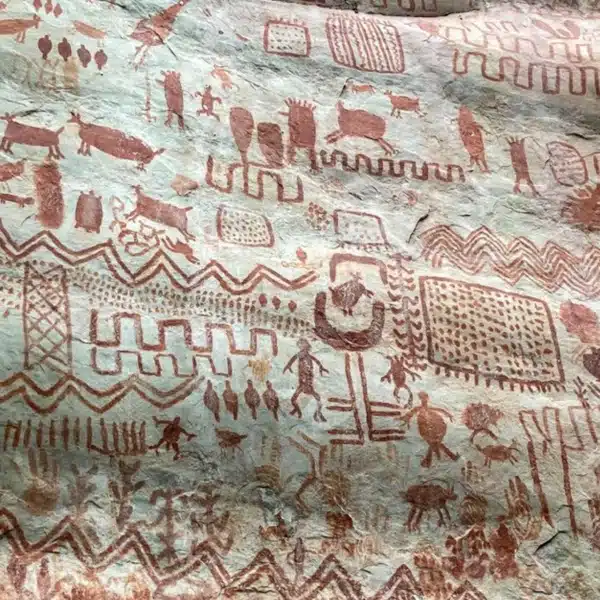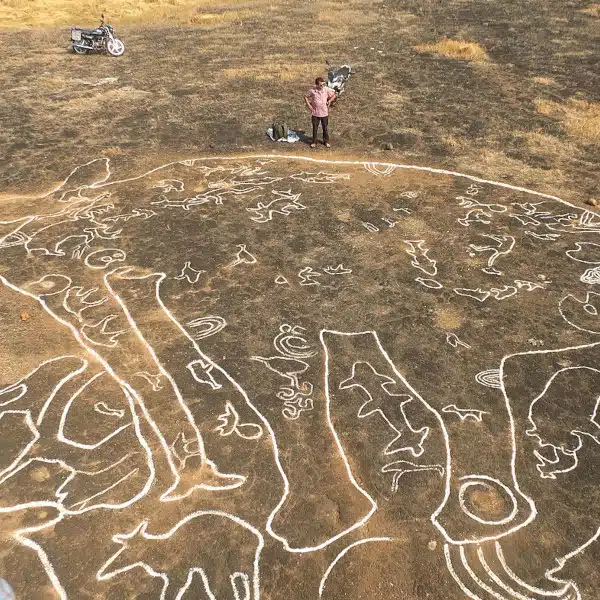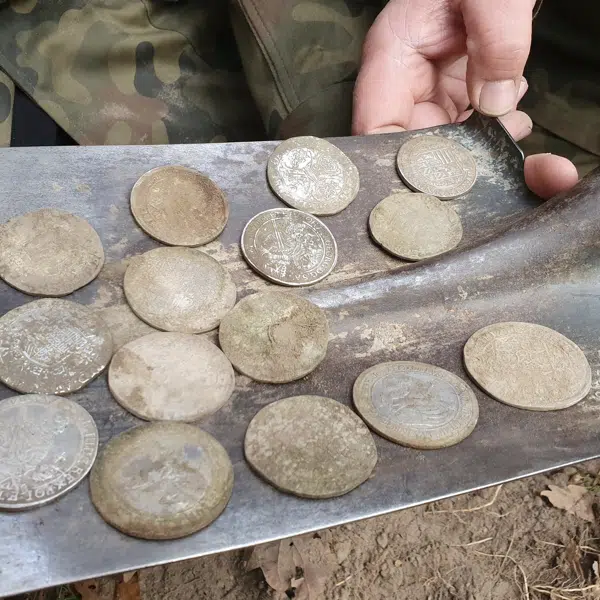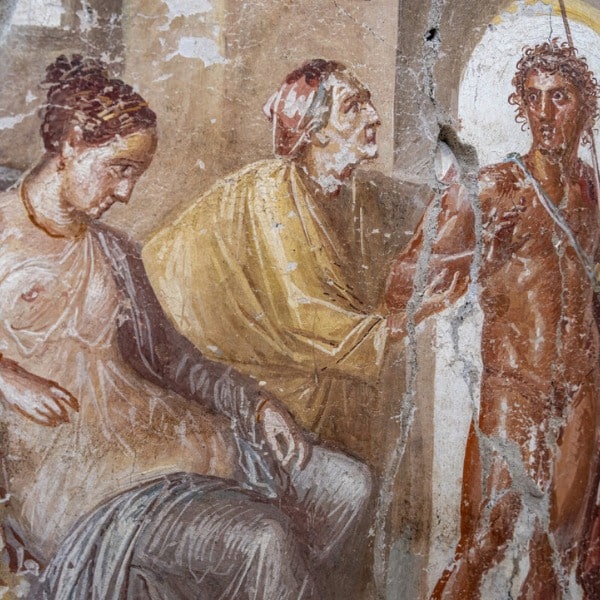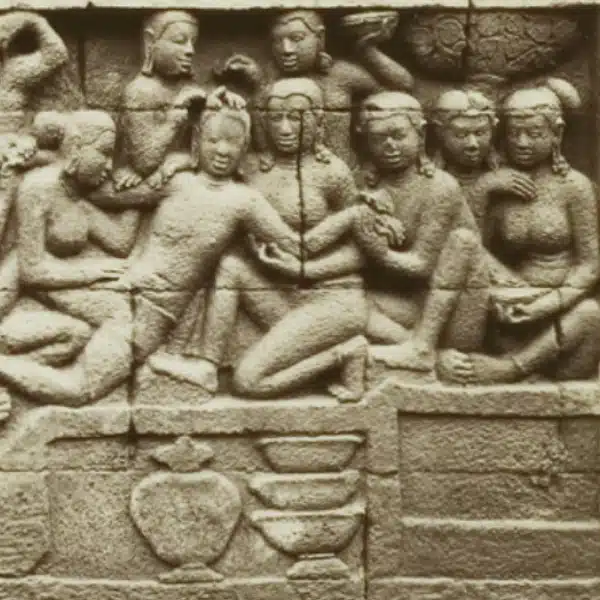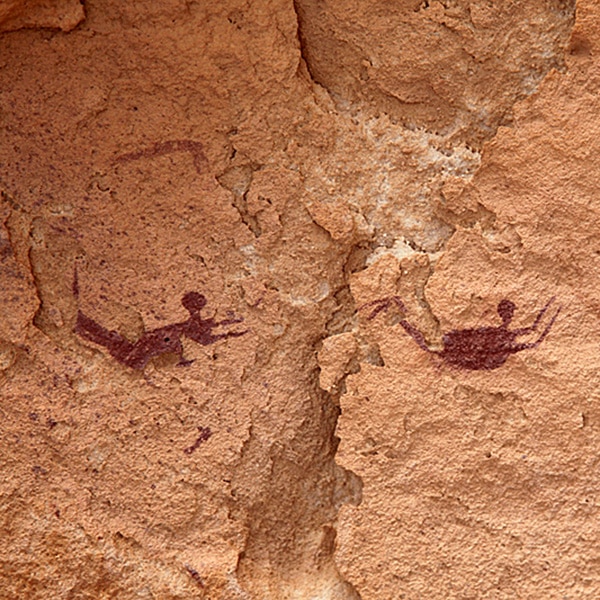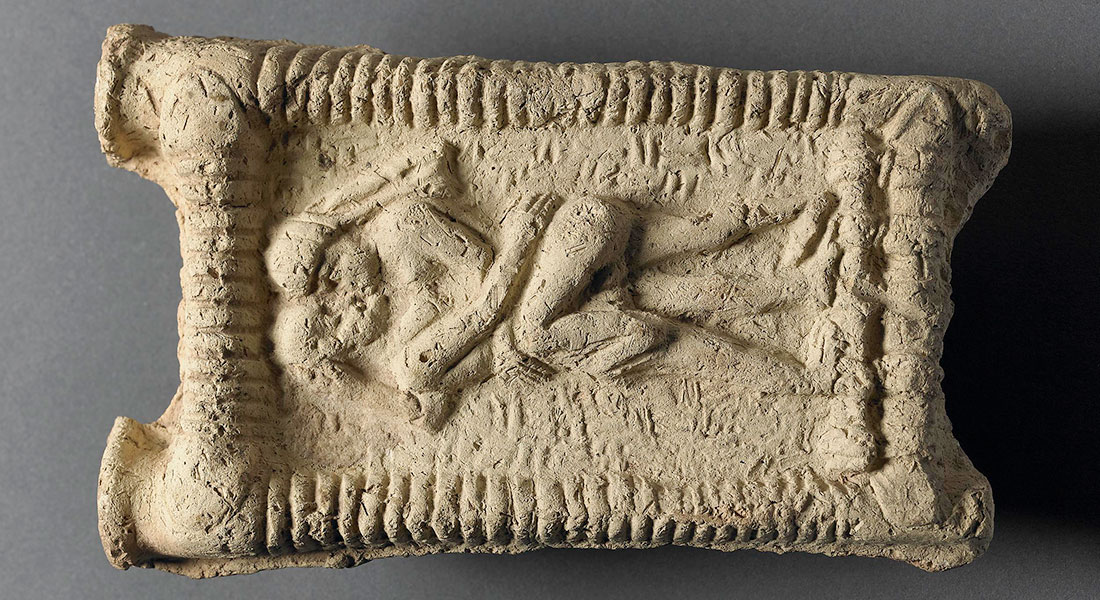
Photo: THE BRITISH MUSEUM/CC BY-SA 4.0
Love is part of the human condition. It can be expressed in a variety of ways, from platonic hugs to passionate smooches to caring acts. But perhaps no symbol of love jumps to mind as swiftly as the kiss. Whether between lovers, on the cheeks of friends, or on the foreheads of small children, kisses express meaning. So, when did this kissing all begin?
As it turns out, the ancients loved to kiss and tell. The earliest texts to mention romantic kissing date back to Mesopotamia 4,500 years ago. In fact, scientists are adding a rich new layer to the history of making out by suggesting that ancient humans were actually swapping strains of oral herpes which can be tracked in the genetic record.
As reported in Science, kissing is hard to study. Some scientists have postulated that the behavior originates in prehistoric mating needs to test the health of one's potential mate by tasting their saliva. Others have speculated that it is purely a cultural mechanism, a learned behavior that most (but not all) human cultures have acquired. Certainly, all seem to agree that kissing sprung up independently across the globe.
Article authors Troels Pank Arbøll and Sophie Lund Rasmussen argue that ancient Mesopotamian sources can give a fascinating insight into the earliest records of this behavior. The duo notes that ancient Indian texts were long thought to be the earliest reference to a romantic kiss, dating to around 1500 BCE. They now point to Mesopotamia—the “fertile crescent” or “cradle of civilization” in the Near East—which left behind a rich wealth of visual carvings and cuneiform tablets recording many facets of literature and everyday life. Around 2500 BCE, or 4,500 years ago, texts in the Sumerian language begin to appear which describe kissing. These smooches are seen in erotic contexts. Meanwhile, in Akkadian (another language of the wider region), tablets record respectful, platonic kisses (such as kissing an elder's feet) as well as erotic encounters, lip to lip.
As Rasmussen noted in a statement, “In fact, research into bonobos and chimpanzees, the closest living relatives to humans, has shown that both species engage in kissing, which may suggest that the practice of kissing is a fundamental behavior in humans, explaining why it can be found across cultures.” The authors note, “Two texts from ∼1800 BCE are especially revealing. One describes how a married woman was almost led astray by a kiss from another man, and the other describes an unmarried woman swearing to avoid kissing and having sexual relations with a specific man.”
Regardless of the impetus, the apparently widespread nature of kissing among ancient humans likely meant widespread saliva-swapping. With this came disease transmission, including a type of oral herpes known as herpes simplex virus 1 (HSV-1). It's possible this was the cause of the disease bu’šānu, which appears in ancient Mesopotamian medical texts. Its symptoms included vesicles around the mouth area, like oral herpes.
Studies have even shown it is possible that ancient Europeans acquired new HSV-1 genomes in the Bronze Age due to migration and learned kissing behaviors. Even as far back as 100,000 years ago, Neanderthals may have swapped saliva with humans. Scientists have speculated this based on the transmission of an oral microbe, Methanobrevibacter oralis. Whether learned or instinctual, disease-transmitting or benign, kissing has a long human history that is only beginning to unravel as the ancients finally kiss and tell.
The history of kissing is a contested mix of archeology, psychology, and biology.
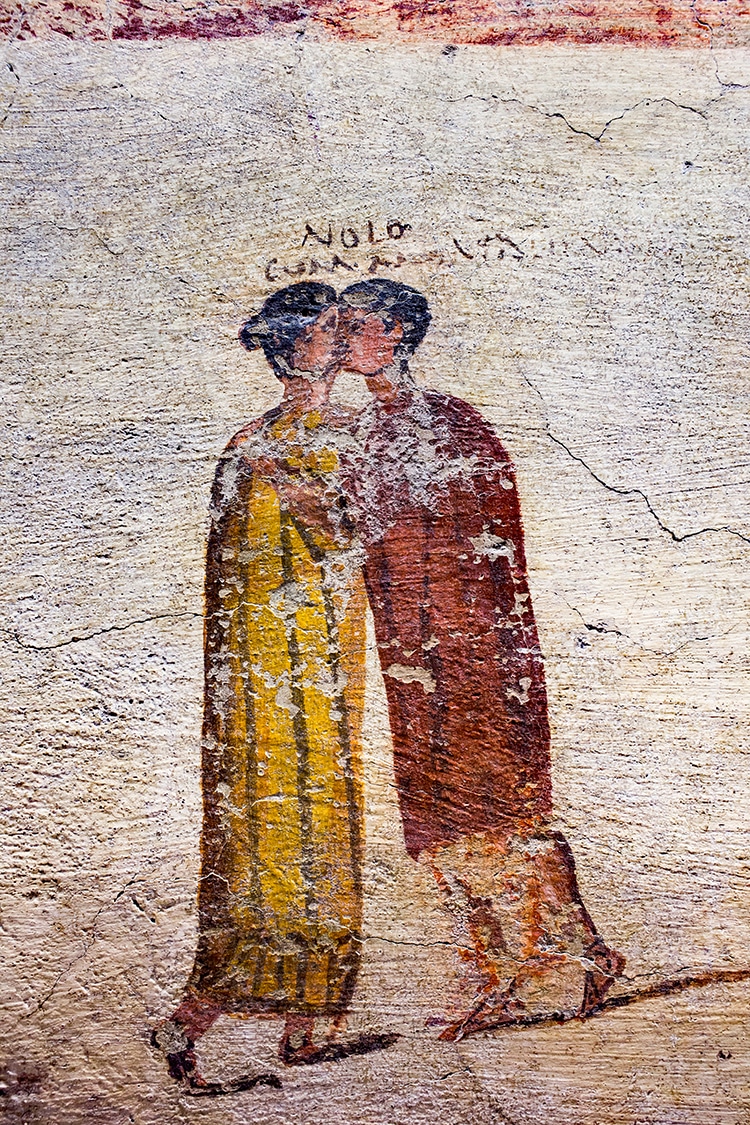
A couple kiss in a wall painting from ancient Pompeii. (Photo: ArchaiOptix via Wikimedia Commons, CC BY-SA 4.0)
The earliest kiss recorded likely dates to 4,500 years ago in ancient Mesopotamia.
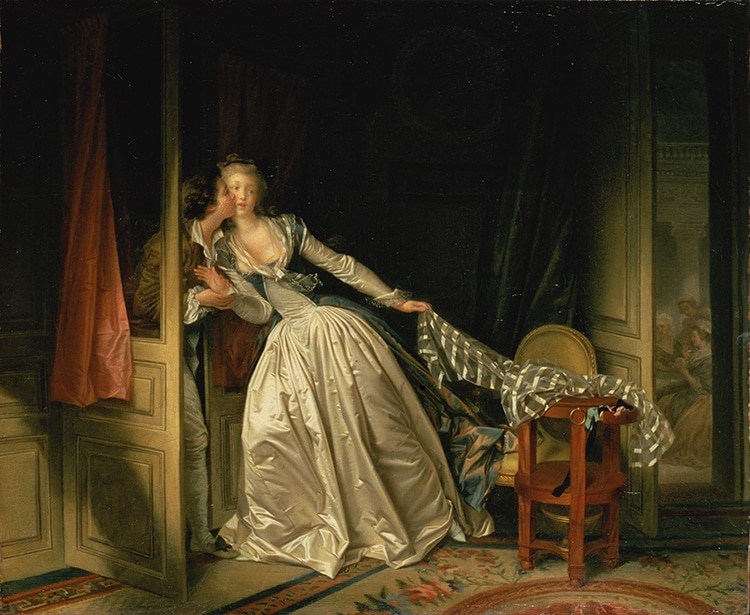
“The Stolen Kiss,” Jean-Honoré Fragonard, late 1780s. (Photo: Wikimedia Commons, Public domain)
h/t: [IFL Science]
Related Articles:
Explore Photos of Mount Rushmore Before & During Construction
Tragic True Story of How a Boy in 1960s Mexico Found a Radioactive Capsule
11 Facts About the Ancient Egyptian Queen Nefertiti
Researcher Uses UV Light to Uncover Hidden Chapter of the Bible











































































